
The Sicilian Defense can be broken down into four main variations: The Najdorf, The Classical Sicilian, The Dragon, and the Scheveningen.
Today we’re taking a look at how to play the Sicilian Dragon and its variations, the accelerated dragon and hyper accelerated dragon.
I’ll even throw in some games with some basic traps to watch out for.
Let’s get started.
Purchase the entire eBook to learn how to play the Sicilian Dragon
Table of Contents
- What is the Sicilian Dragon
- What does the Sicilian Dragon Look Like
- Other Variations of the Dragon
- Main Ideas of the Sicilian Dragon
- Why play the Sicilian Dragon
- Basic Traps
- How to play against the Sicilian Dragon
What is the Sicilian Dragon?
The Sicilian Dragon is a variation of the Sicilian Defense opening for black. The Sicilian Defense is arguably the best answer to white’s most common opening, 1. e4. The main reason it’s so strong is because black does a great job preventing white from playing d4 easily and establishing a strong pawn center.
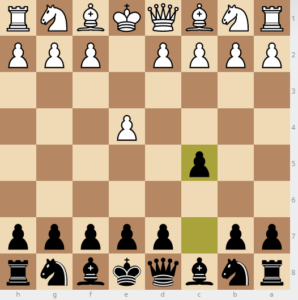
There are a ton of variations of the Sicilian and people have written many, many books on the subject. The topic of this article will be centered around the Sicilian Dragon, which consists of black playing g6 at some point followed by Bg7. This results in a fianchetto of the kingside bishop.
What does the Sicilian Dragon Look Like?
The Sicilian Dragon is characterized by this formation for black. The ideal pawn structure leads to nice end game play and helps limit the movement of white’s knights.
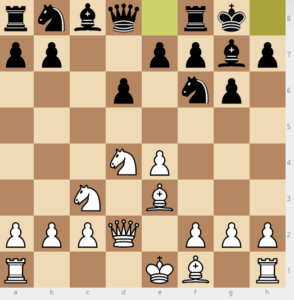
- e4 c5 2. Nf3 d6 3. d4 cxd4 4. Nxd4 Nf6 5. Nc3 g6 6. Be3 Bg7 7. Qd2 O-O
Fianchettoing a bishop on the kingside is always a nice way to prevent back rank checkmates later on. By delaying your development towards the center with the g6 move, you are giving your bishop the best diagonal it can have while also saving a pawn move later in the game.
Sometimes plans are delayed because you have to prevent a back rank checkmate, but that is not a huge issue with the Sicilian Dragon.

Other Variations of the Dragon
There are a few ways to play the dragon. Traditionally you would play d6 on the second move to prevent the idea of black playing e5, forcing your kingside knight to move. Some players like to turn this opening into a more aggressive opening by playing g6 as quick as possible, sometimes abandoning d6 altogether.
In most Sicilian games, black would love to play d5 at some point. The idea of accelerating the dragon (or hyper accelerating it) means you skip playing d6, knowing you want to play d5. This can help save a tempo because you are not moving a piece twice in the opening (d6 followed by d5 later on).
If you want to play either the accelerated or hyper accelerated, you’ll want to make sure that you understand the risk of not playing d6 so you don’t fall into any traps.
Accelerated Dragon

- e4 c5 2. Nf3 Nc6 3. d4 cxd4 4. Nxd4 g6
The accelerated Dragon occurs when black tries to play g6 without playing d6 first. The game is considered open because black’s c pawn and white’s d pawn have been traded off. This helps give black a semi-open file for the eventual Rc8 move, but also helps open the attack for the black bishop once fianchetto’d.
Black is able to play g6 quickly and even nf6 soon because the knight on f3 has been moved to d4. This means the knight on c6 (which was moved instead of d6) can defend against an e5 push.
Hyper Accelerated Dragon
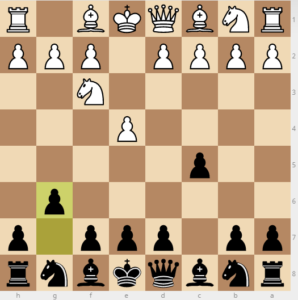
- e4 c5 2. Nf3 g6
The hyper accelerated dragon is a variation of the Sicilian Dragon, but you move quickly to show your hand with 2…g6. This is played when a player wants to have a strong diagonal for the bishop quickly.
It can be a nice way to retreat your king to safety without threats of the knights or light squared bishop on the queen side. Some players may have strong use of the e8-a4 diagonal with their bishop or queen if black opens up the diagonal with d6. Since you want to push d5 eventually, you’ll give white this diagonal at some point. If you can castle your king safely before you push d5, then you will be in a nice position to start the game.
Main Ideas of the Sicilian Dragon
When you play the Sicilian Dragon, it’s always important to understand basic traps that you’re going for. This way, you can exploit your opponent if they go “off the book,” or move out of order.
Here’s a video that helps show some of the main ideas of the Dragon.
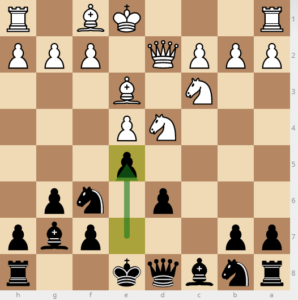
Another main idea is to get your opponent to play b3 or b4. If you keep the sight of your dark squared bishop on the rook on a1, you will have a constant threat in the back of white’s mind.

You can force your opponent to play b3 or b4 if you put pressure on their knight with moves like b5 and then b6. Provoking pawns to push forward is always a great plan, but in this case, it means your bishop has a nice x-ray attack on the rook if the knight ever moves.
If your opponent castles queenside, which is often the case, you can put an x-ray attack on b2, which in many cases can result in a quick checkmate if your queen is covering the b file.

To the best of your ability, hold onto your dark squared bishop. If you can, trade one of your knights for white’s dark squared bishop.
Why play the Sicilian Dragon?
There are many reasons, but the main ideas are to protect your king with a minor piece and put your bishop on the longest diagonal of the board.
To put it simply, the Sicilian Dragon is a safe way to play. It can be very aggressive and sharp, but it’s a nice way to play. Not only do you defend your king with a minor piece, but you also have a ton of active play if the center opens up (pawns are traded off).
Like the King’s Indian, black will have a nice comfortable kingside, but also be able to transform the perceived passive bishop for a super strong one later, if the center opens up.
1. e4 c5 2. Nf3 d6 3. d4 cxd4 4. Nxd4 Nf6 5. Nc3 g6 6. Be3 Bg7 7. Qd2 O-O 8. O-O-O Nc6 9. f3 Bd7 10. Nxc6 bxc6

In this example, white has opted to trade off the central knight for the knight on c6. Note the superior pawn structure black maintains in addition to the bishop that is no longer blocked by pawns. Black’s next venture will be to find a new place for its knight on f6, or position the queen on b6 with a nice attack on b2.
This structure is known as the Yugoslav attack for white and it is very strong, but one mistep can turn into devastation on the queenside.
11. Bc4 Qa5 12. kb1 Rfb8
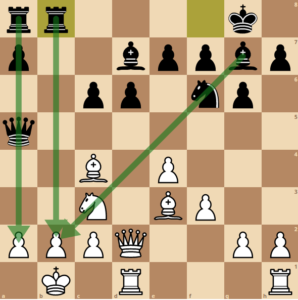
Just a few logical moves later and black has taken complete control of the semi-open b file and the queen, rook, and bishop all have their sights on it.
With the Sicilian Dragon, you’ll be happier playing an open game. That doesn’t mean a closed game won’t turn into the same success. You just need to open up the position eventually to vastly improve your kingside bishop.
The Dragon Against the Kings Indian Attack
The great thing about the Kings Indian Attack is you can play it against anything black throws at you. The point is to play an early d3 and keep the Silician closed.
The Dragon can still be played against this, but the plans differ. Instead of opposite castling and all out attacks, both kings are on the same side of the board.
Main ideas – develop on the queen side and push your pawns forward. You won’t have a king as a target, but you can gain more space and your dark squared bishop can have a nice influence on the long diagonal.
Here’s a game I played awhile back in the closed Sicilian Dragon. White Fianchettos on the king side and I push my queen pawns. My opponent didn’t quite play the King’s Indian Attack correctly and I had a quick win.
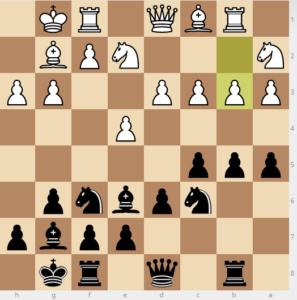
Basic Traps in the Sicilian Dragon
X-ray attacks and discovery
Many times, black is able to create discover attacks along the a1-h8 diagonal. While the dark squared bishop is unable to attack anything right away, a simple knight move can often create nice threats.
Below, the knight has just moved to g4 and we can now see that the bishop has opened up an attack on d4. The knight on d4 is now attacked twice. At the same time, black’s dark squared bishop is under attack on e3.
- In the dragon, black has a super strong dark squared bishop with the best diagonal possible. Trading a knight for white’s dark squared bishop is a great way to progress and give yourself a nice end game as black.

If white recaptures the knight with the queen, black recaptures in the center with the c6 knight (not the bishop as we discussed, you want to keep this monster).
- Keep an eye on the c1-h8 diagonal, which often your dark squared bishop can take advantage of
I used this diagonal to defeat a 2074 ELO player and it’s a good idea to remember this idea for unaware players. If playing white and you try the Yugoslav attack, try to take a move to get your king out of the diagonal by playing kb1.
- Look for e4 sacrifices where you can trade your knight on f6 for the e4 pawn. This opens up the bishop on the long dark diagonal and can often retake the knight on c3 or even attack the rook on a1.
Here’s a famous Sicilian Dragon trap from Bobby Fischer vs Samuel Reshevsky where white wins a queen pretty early on.
How to play against the Sicilian Dragon
How to Play the Yugoslav Attack

The Yugoslav Attack is a standard way that white can deal with the Siclian Defense in general. Its ideas can be used against the Sicilian Dragon or the Najdorf variation. The main ideas include a kingside attack with both the long diagonal of the bishops, as well as a pawn tsunami (g and h pawns).
The main goals will be to push h4-h5 to be able to attack the g6 pawn. This can ultimately open up the kingside and make way for the rook on h1.
White generally will castle queenside to put more pressure on the semi-open d file with the queen and rook as seen in the image above.
Here is a game that I played that really emphasizes how strong this attack can be if black doesn’t react properly.
Levenfish Attack
The Levenfish attack focuses on white castling kingside and playing f4, in hopes of opening the f file for the kingside rook. F4 is played relatively quickly and sometimes black can fall into some traps if they play by fianchettoing their bishop as quickly as possible. Black needs to be careful if they play as follows:
Notation: 1. e4 c5 2. Nf3 d6 3. d4 cxd4 4. Nxd4 Nf6 5. Nc3 g6 6. f4
In this scenario, black needs to be careful and play Nf6. If they play Bg7 without thinking, white can put a lot of pressure on the center with 7. e5.
White will achieve a semi-open f file for the rook as soon as they castle, and the open diagonal with check (the eventual Bb5+) gives white even more time to develop and move ahead.
The Maroczy Bind

The Maroczy bind is a very positional way for white to play against the dragon. Despite the weakness of d4 that occurs when white plays e4 and c4, it allows white to prevent black from playing d5. Oftentimes, black is fighting for the opportunity to play d5, and the bind puts a strain on the dragon.
You won’t see the Maroczy bind in the standard Sicilian Dragon because black often plays nf6 to put pressure on the e4 pawn. White responds with Nc3 and thus cannot play c4.
My Sample Games
Yugoslav Attack at the US Amateur Event
Sicilian Dragon at the US Amateur Event
Sicilian Dragon Vs the Yugoslav Attack at the World Open u1800
Conclusion
The Sicilian Dragon is a great open because it can be both passive or aggressive. Ideally, black would open up the center to turn its dark squared bishop into a super strong, active piece.
If you play other openings that fianchetto your bishop, then the Sicilian Dragon is a great choice for you to play.
For me, I actually ventured into the King’s Indian because of the Sicilian Dragon. You’ll find both openings have a lot of the same ideas and you can transpose from one into another.
Ultimately, it’s really up to you if the Dragon plays to your strengths. If you’re unsure about how to defend against an opening, the best suggestion I have it to play it! That way you learn the traps and know what to look for from the other side.

